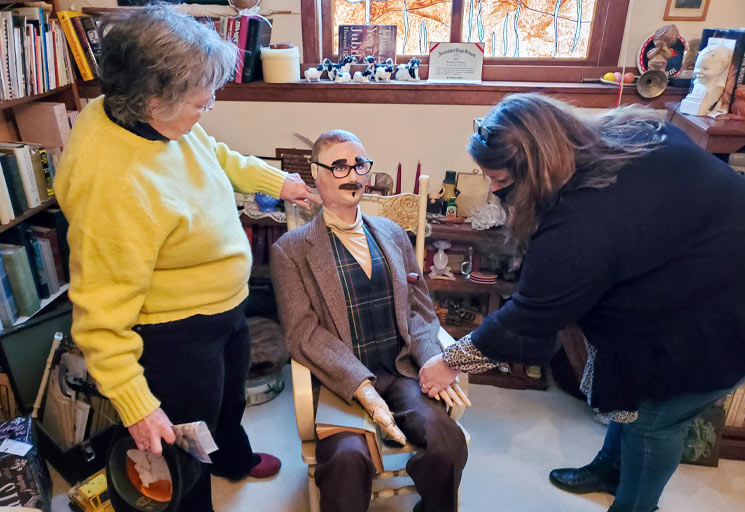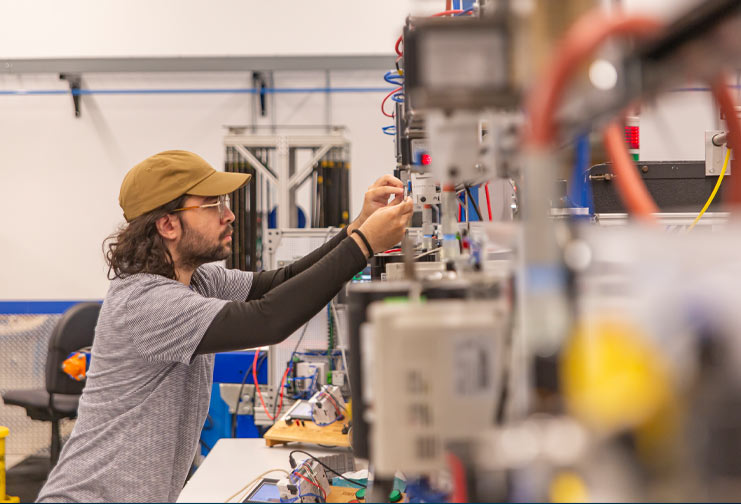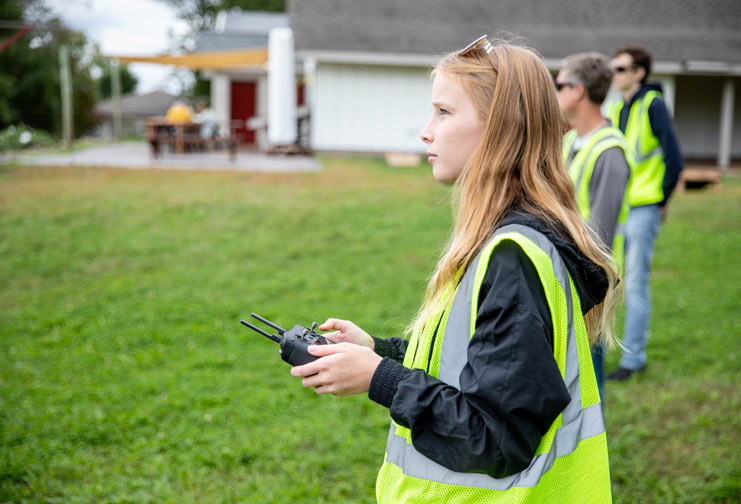Thursday, February 17, 2022
EC woman, CVTC simulation coordinator bond over manikin

Upon hearing her harrowing tales, one might think Beverly Smith and her family were in the cosmetic surgery business the way she speaks of recreating and attaching McTavish’s ears, fingers and other parts.
But Smith, 74, of Eau Claire, is nothing of the sort. The true story of this retired piano teacher’s affiliation with McTavish may seem stranger than fiction.
McTavish, technically Model-N, is a manikin – the spelling of the word indicates he was made for medical purposes – and was created in 1947 by the Chase Hospital Doll company out of Rhode Island. The 5-foot-something gentleman, donning a felt hat and tweed sport coat, prodded Smith, simply by his presence, to give Chippewa Valley Technical College a call when she came across an article recently about the college’s newly acquired medical manikins used to teach students.
When Theresa Meinen, CVTC simulation center coordinator, received Smith’s invite to her home to view the medical marvel, Meinen was in.
“I just could not pass up this opportunity to see how far these manikins have come,” Meinen said. “Smith was so sweet over the phone. She really just wanted to share what she had with us.”
McTavish’s Adventures
Having been born in 1946, Smith was just a babe in her mother’s arms when the family happened upon McTavish – a name he was given by Smith’s parents, but Smith said the name’s origin is unclear.
Her uncle was the dean of the dental school at Washington University in St. Louis. Smith’s other uncle had just gotten out of the Marines and was looking for a school to attend. The dean took the family on a tour of the campus, which included the basement of the medical building.
“My uncle pointed to the big stack of wooden crates – they looked like caskets, to be honest – and he said, ‘Look at that. It’s such a waste,’” Smith recalled of her parents telling the story.
The wooden boxes were full of Chase medical manikins. They were ordered before the start of World War II to train nursing staff, but by 1947 they were obsolete, Smith said.
“They were just finishing up the war and those injuries were substantial,” Smith said. “People were coming back without limbs. These manikins just didn’t cut it as far as training at that time.”
The dean asked the Smith family if they wanted one. The answer was a resounding “Yes.”
“And he’s been a part of my family ever since,” Smith said. “I literally grew up with him, and when I went to college, he lived in my dorm room.”
McTavish was born in Rhode Island, “adopted” from Missouri, taken home to Tennessee, and moved to Florida, then Alabama, New Jersey, Massachusetts, Colorado and finally Wisconsin.
Smith keeps McTavish in a rocking chair in the basement of her split-level home. She said he is basically a brother to her “because he’s been around forever and I don’t think of him as an object – he’s a part of the family,” Smith said.
After she read the article about the new medical simulators at CVTC, she wondered how much technology had changed.
In short, it has changed a lot, Meinen and Smith agreed. The women met at Smith’s home in early February so Meinen could meet McTavish and the women could talk about how far technology has come.
McTavish has upper arms that are made for administering injections. He also has an opening on his stomach and one on his backside. Meinen guessed the openings might have been for gastrointestinal training, but she can’t know for sure. Regardless, the technology is night and day.
“This was probably state-of-the-art in its day,” Meinen said after examining McTavish. “Now everything looks so real. There is the appearance of veins under the skin. We can program them to have a stroke or heart attack. They cry, they sweat, they cough, they sneeze. They’re pretty spectacular.”
During their visit, Meinen showed photos of the new manikins to Smith, who was impressed by the advancements.
“I had no reference until I saw your photos,” Smith said to Meinen. “Obviously I knew in this length of time there are going to be major changes … but this, they’re just amazing.”
Meinen said the best part is that students can learn on life-like manikins first and make mistakes before they try their skills on real patients.
“When students are in the hospital or when they’re practicing on real people, we don’t let them make mistakes,” Meinen said. “We stop them. So they never see the consequences of a mistake. In the simulation lab you can let it play out. That’s how they learn.
“Think about those nurses and doctors back then, when McTavish was made, they didn’t have an opportunity to learn like that. That’s how the medical community has become more skilled.”
Meinen and Smith plan to connect again in the fall when Meinen expects to host a CVTC Clinical Simulation Center open house for the community. Smith has agreed to bring McTavish to the open home to show the community, in person, how far medical technology has come.
Until then, the dapper-looking McTavish will remain in his rocking chair with the Bible on his lap and a lifetime of memories in his manikin heart.


